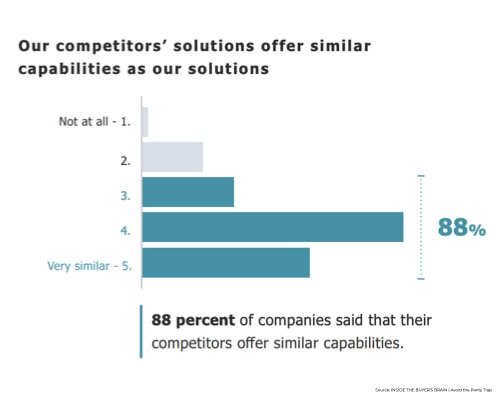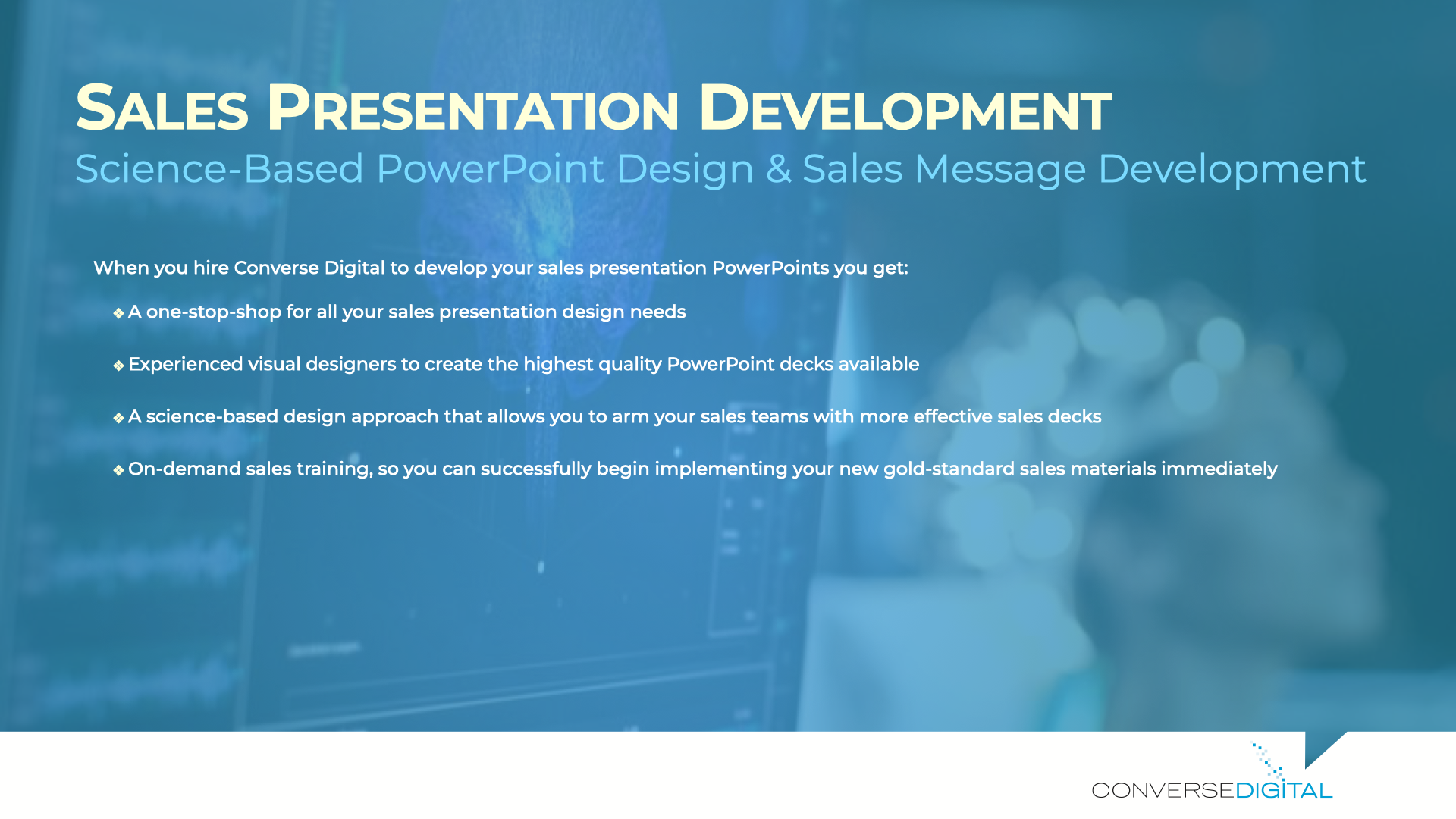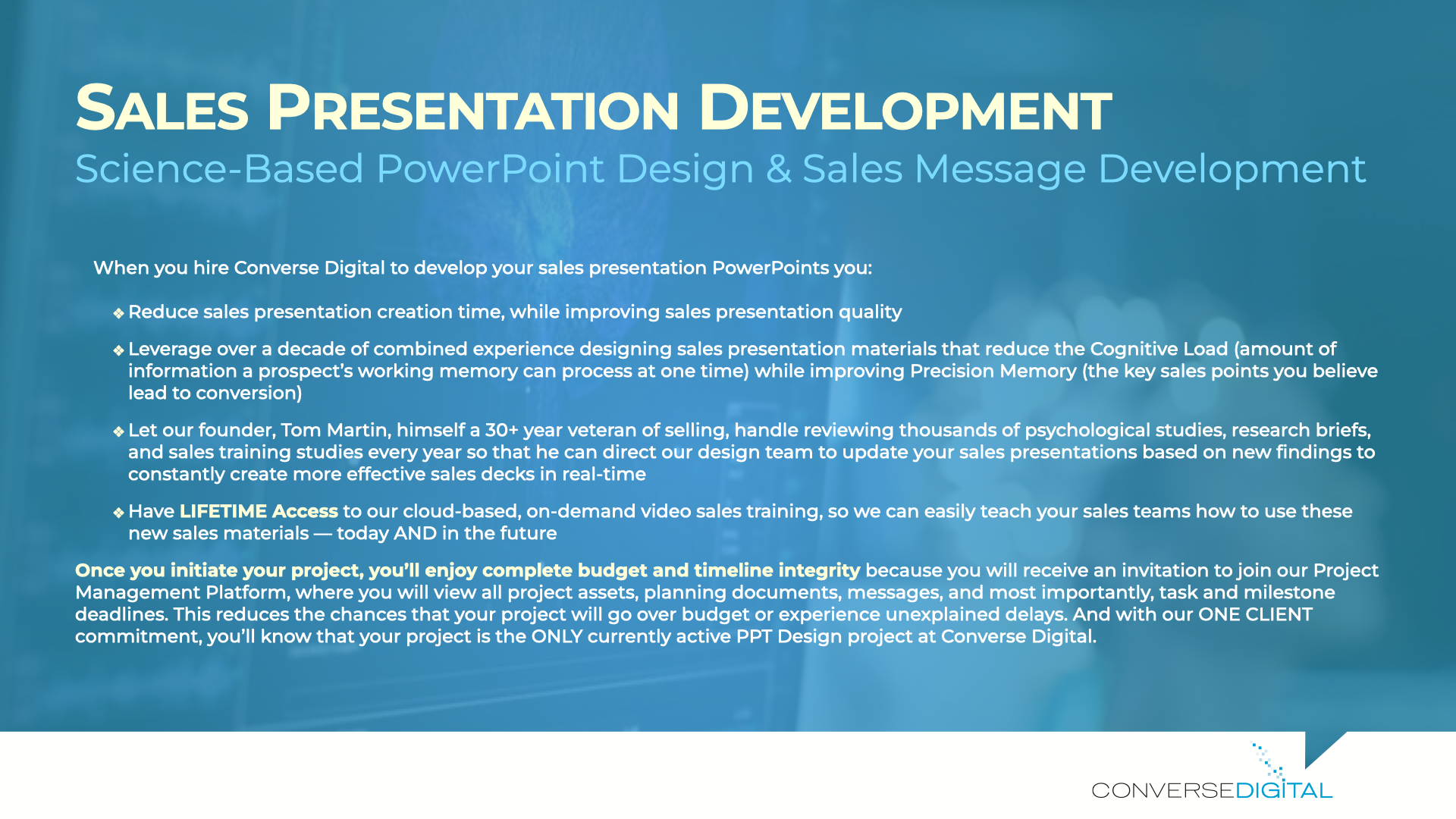Competitive differentiation is crucial to delivering compelling sales pitches that close quickly and generate higher margins. When sales prospects view you, your organization, and your product or service as something extraordinary—and not just a commodity — you can avoid price concessions as your primary tool to win more business.
Suppose you're lucky enough to have a product or service that truly is in a category of one, congrats. However, the product or service offering is not materially better than the competition for most business development and sales professionals. Instead, it offers different bells and whistles that might make it more attractive to specific potential sales prospects.
So what should you include in a sales presentation? And what constitutes a good sales presentation that differentiates you? Glad you asked because that's what we'll cover in this article.
B2B Research Says B2B sellers and marketers have a problem
One recent B2B industry survey found that 88% of companies agree their offering isn't significantly different than a competitor's. They also aren't confident buyers understand what makes their solution unique and different. Ouch. The double whammy.
Currently sellers differentiate by articulating "value"
They primarily do this by focusing on benefits rather than features. When discussing the product or service, descriptions are intentionally short and crisp (because, you know, humans now have the attention span of a goldfish



Unfortunately, B2B Research Suggests Sellers Are Failing
Fortunately for you, you're reading this article and will soon find out why new B2B research shows these approaches fail more than they succeed. But fear not, dear reader, because that same research sheds light on the process you should follow when you want to write a good pitch deck or sales presentation.
The Research Study
B2B DecisionLabs and Dr. Nick Lee, Professor of Marketing at Warwick Business School, conducted this research study with 400 B2B professionals. The message test conditions were based on an anonymized go-to-market pitch for a truck driver recruiting company. The pitch included a set of specific business challenges and complementary capabilities to resolve those challenges. Starting from the same set of powers, the researchers created four different messages that reflect popular approaches to capability descriptions and value statements.
Each message was then positioned as a unique competitor in a head-to-head presentation.
• The Telling Details test condition was called OnRoad Logistics.
• The other three test conditions were all called Highway Fleet Services.
In every test scenario, participants saw, in random order, the Telling Details presentation from OnRoad Logistics and one of the other three presentations from Highway Fleet Services.
The Study Results Noted a CLEAR WINNER
The Telling Details approach beat every other message, individually and in the aggregate, across every variable tested. Of the B2B buyers in the study:
Why Does Telling Details Produce Better Outcomes?
The Telling Details approach works so effectively because it is:
As the researchers pointed out in their final report, using this level of detail and specificity adds depth to your message, making it more concrete and believable. The details act like costly signals that build your buyer’s confidence that your solution offers the most value.
Example: What Does a Telling Details Sales Pitch Look Like
If you want to see the actual Telling Details example and examples of the other messages tested, go here to download the entire report. But as long as you're here, I thought I'd show you a quick example of a "value selling" approach most common in today's sales pitch presentations vs. a good sales pitch deck slide modeling the Telling Details format. I'll let you decide which one you'd most likely respond favorably to if you were in the market for Sales Presentation Deck Design.
Let's start with a common slide you might see in a sales pitch deck or sales presentation from an agency offering sales presentation deck design services. This is an example of using superlatives and comparatives to create the illusion of high value. (Click Image to see full-sized slide)
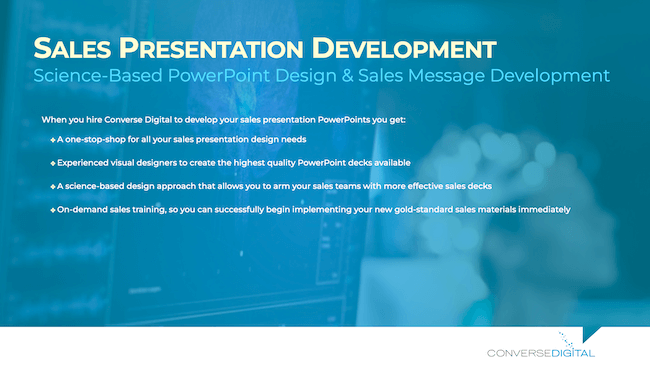
Now let's look at the same sales message told through a Telling Details lens. (Click Image to see full-sized slide)
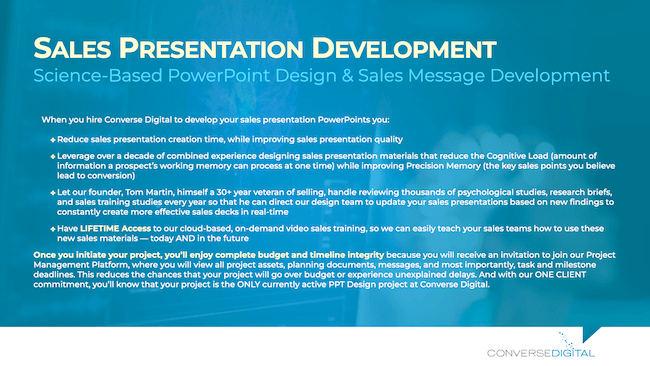
Which slide is more compelling? Which slide leaves you feeling more confident the agency can actually deliver science-based PowerPoint design and sales message development? And finally, which slide leaves you feeling like this isn't the first time the agency has created science-based PPTs for clients?
In Summary...
Don't fall for the goldfish analogy. Creating a Telling Details version of your story will be a challenge if you don't have experience selling something or your product or service is brand new. But even then, look for ways to insert whatever credible details you can because something will be better than nothing.
And for companies, consultants, and agencies that possess the credentials that make the Telling Details approach so powerful, stop hiding your light under a bush. Instead, shine it brightly on every relevant, persuasive detail you can.
Interested in Science-Based Presentation Deck Design?
If you feel your company's sales or pitch decks could use an update, you're not alone. But don't just have an art director make them pretty or "on brand," let us show you how to apply the latest neuroscience and eye-tracking research to create more effective sales presentations that improve Precision Memory retention, ensuring your prospects remember the RIGHT MESSAGES that you know drive better conversion rates.
This post was originally published on Painless Prospecting, the weekly sales and marketing blog created by the fine folks at Converse Digital. If you want to learn how to create, engage in, and convert conversations into new clients and customers, give them a call.
Don't miss the next great article
Subscribe today to get our best thinking delivered to your inbox every week.

